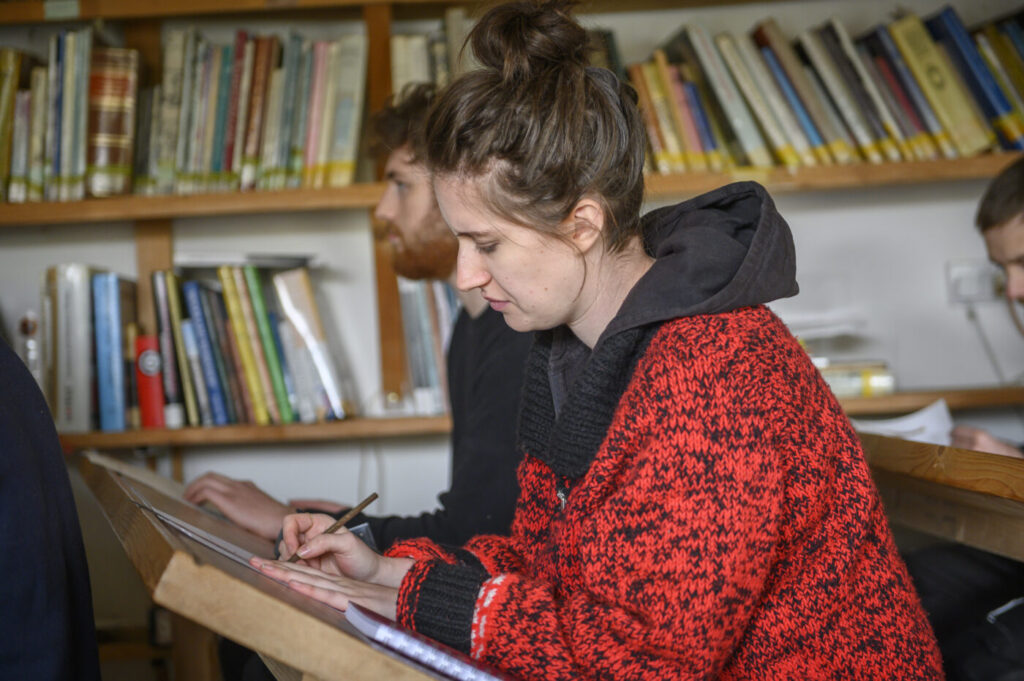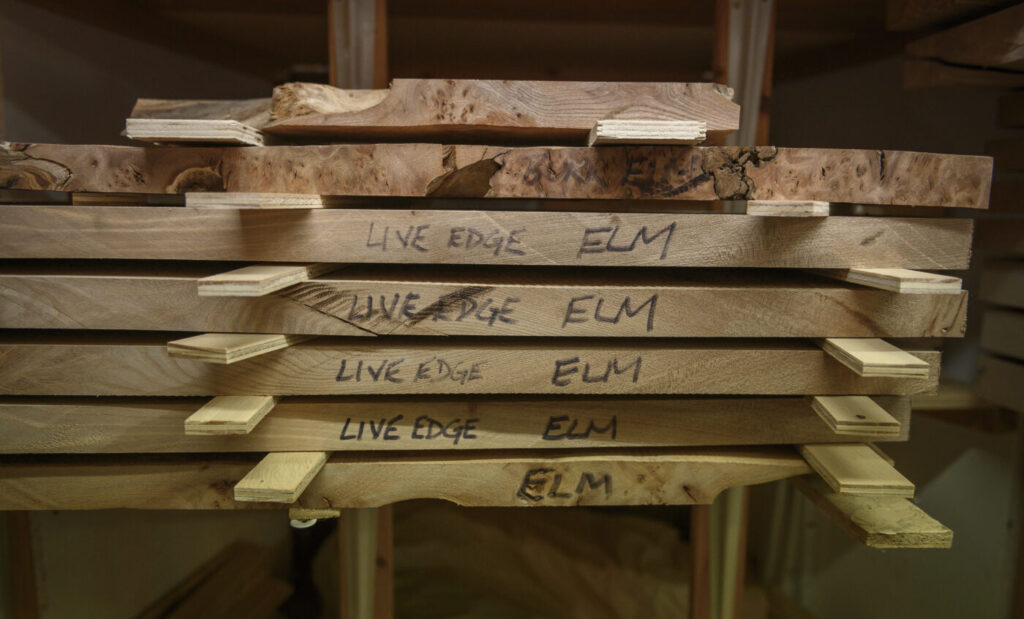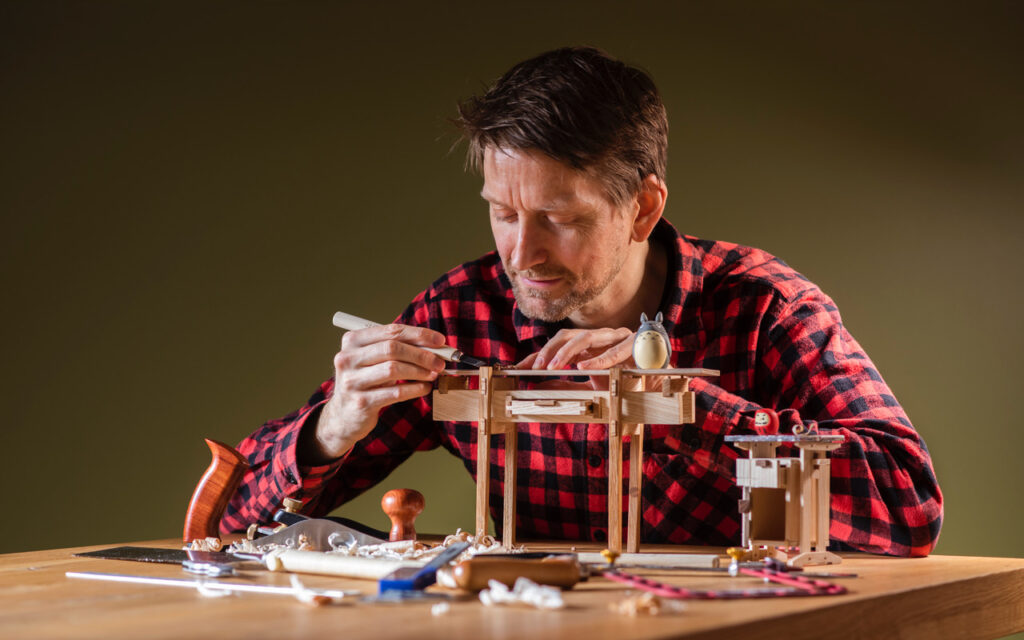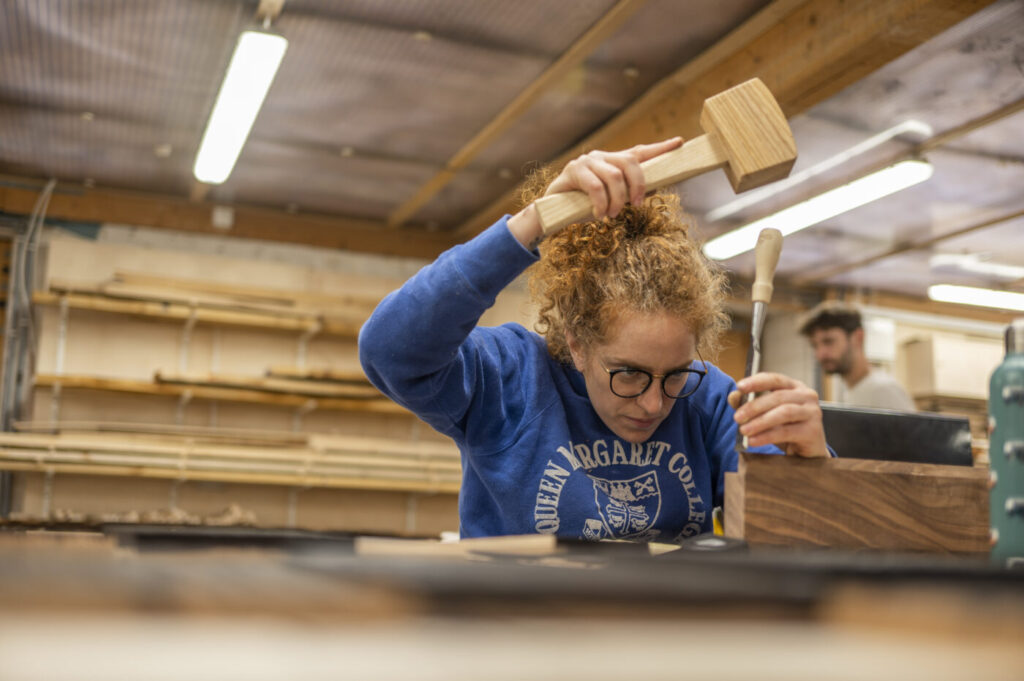Whether you’re a seasoned furniture maker or just starting, this guide will walk you through some of the essential steps to bringing your furniture ideas to life.
From gathering inspiration to crafting the final piece, in this blog Chippendale School Principal Tom Fraser explores the elements of furniture design.

Research and Inspiration
I believe that developing and showcasing your own identity and style in furniture making is essential. Our own creative identity is not formed out of thin air, rather it is shaped by external influences. The most obvious source of inspiration is often other artists and furniture designers we look up to and admire. While we can take a lot from their designs, I encourage our students to look beyond the designer’s furniture as it stands – it is important to consider the intricacies of their craftsmanship and focus on how and why they choose certain elements for their furniture.
Take cues from iconic design eras. If you are looking for minimalism, explore mid-century American or Scandinavian design. If you have a more opulent taste, look no further than the Georgian era (Edinburgh is a great city to explore Georgian design!). Researching past design movements offers a treasure trove of information for crafting robust and timeless pieces that you can put your unique spin on.
I always encourage our students to look beyond furniture for sources of inspiration, whether this be within art, architecture, or nature. Sometimes you just get lucky, and inspiration can hit you when you least expect it! Take our 2023 Student of the Year Nicholas – wanting a chair with arms wide enough to enjoy a cup of coffee while lounging, his wonderful Fireside Chair was born. Often attempting to solve a specific problem can result in innovative and one-of-a-kind furniture design!

Sketching and Conceptualising
At the Chippendale School, our worktops are often filled with scraps of paper, each piece showing the evolution of students’ designs. Frequent sketching is sometimes a step that is overlooked but it is where your ideas take form, gradually morphing into reality. While sketching might not be an immediate passion for everyone, it is an essential aspect of furniture design.
To the casual observer, your work may seem flawless, but your eye will catch the tiniest imperfections, pushing you to refine and perfect. This is what makes your designs so personal! This stage is also a perfect chance to embrace technology and seize the opportunity to use Computer-Aided Design (CAD) to see a 3D version of your design from all angles before you begin constructing.

Materials and Finishes
When selecting wood for your project, it’s crucial to consider not only its visual appeal but also factors such as workability, budget, and durability. We also suggest keeping sustainability in mind. Sustainability is very important to us here at Chippendale and we want to ensure the materials we use are sourced ethically and locally when possible. Explore your local options and identify the most common tree in your area. The type of wood used is sure to influence your design, so careful material planning is essential before embarking on construction.
Get familiar with wood types and their niche qualities. For example, with a tight grain structure and natural resistance to decay, pests, and moisture, maple and oak are great durable options for heavy furniture such as kitchen counters. Alternatively, softwoods such as pine often have a more natural finish but can be susceptible to dents and cracks.
Keep in mind that different types of wood benefit from distinct treatment approaches. Whether using oil, varnish, or wax, each option has its benefits. Applying the right finish is essential to prevent issues like cracking, drying, swelling due to moisture, and deterioration. Plus, proper finishes can enhance the wood’s aesthetic appeal. If you are a novice, going with easy-to-apply wood protective finishes is a better idea.

Prototyping and Testing
This is the stage where physics comes into play! By creating small to-scale prototypes you will discover whether the piece will stand properly and if certain design elements still appear impressive in three dimensions. Sometimes intricate designs that may look great on paper can get lost when constructed. The prototype may also show the need for size adjustments – like a table’s legs looking a little too long for its body.
Don’t make mistakes with your expensive wood! Instead use scrap wood pieces, Styrofoam, or cardboard – materials that are inexpensive but sturdy and easy to manipulate. On our Professional Course, we encourage students to construct small maquettes of their work before embarking on their full-size piece.

Bringing Your Design to Life
After much planning and thoughtful design, it’s finally time to transition from the drawing board to the workshop.
Consider your methods of construction, from cutting to fixings and finishes – plan what techniques you will use before starting. It’s the attention to detail that sets exceptional pieces apart from the ordinary. Hardware, decorative elements, and unique paint techniques contribute to the distinctive character of your creation.
Watching a concept become reality creates a sense of pride like no other, and it is this feeling that many of our students say is what is so magical about woodworking.
—
Furniture design is an exploration of self-expression, innovation, and craftsmanship – a true labour of love. For newcomers, my best piece of advice is to start with simpler designs and slowly build your confidence and skill level. Remember, every master was once a beginner!
Are you interested in pursuing woodworking? Take a look at our 30-week Professional Course to see how you too could craft a career as a fine furniture maker.